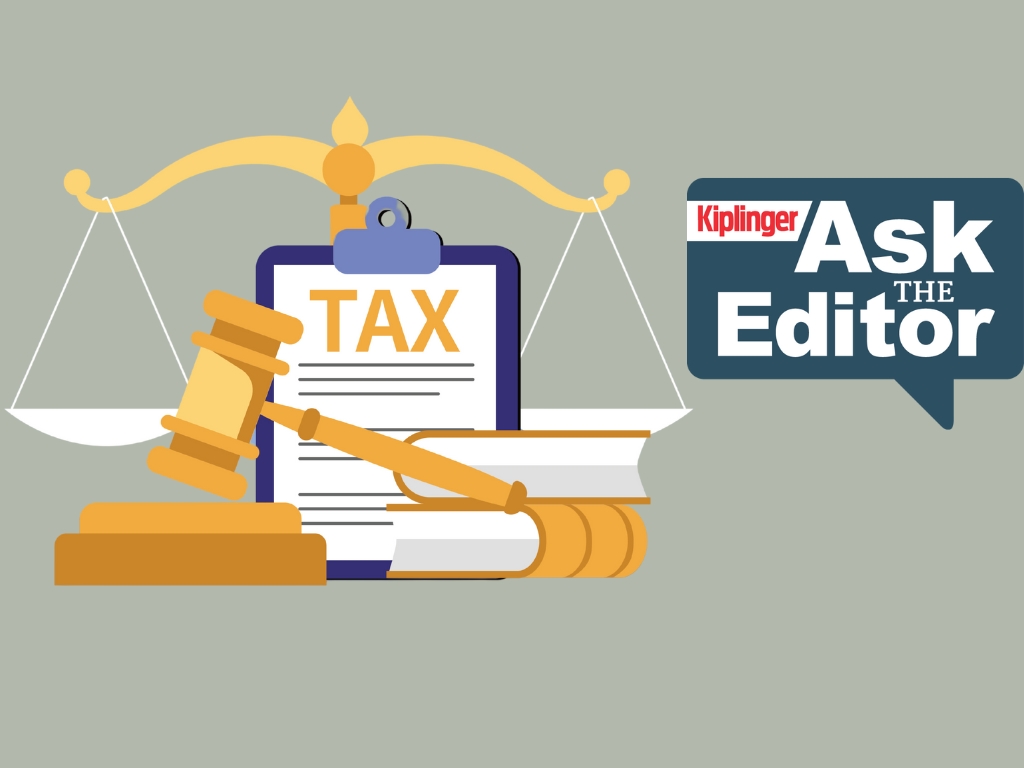Crypto Has Been Through the Wringer in 2022: What Now?
With prices of Bitcoin, Ethereum and other cryptocurrencies down, you may be tempted to give it a try. The best advice for those who are curious may be to tread lightly, and make sure you understand what you’re getting into.


Cryptocurrencies, or digital assets, have gone through a lot of turmoil so far in 2022. Since their high-water mark in late 2021, major assets like Bitcoin and Ethereum have seen dramatic pullbacks in prices. These pullbacks created a chain reaction in other areas of the digital asset market, which ultimately led to the bankruptcy of several crypto platforms – and a crash that wiped out the value of a few large cryptocurrencies.
Many coins have seen massive price drops since their all-time highs and have not recovered. As an investor, how should you approach crypto now?
Crypto basics & recent tumbles
First, a brief synopsis of crypto and recent major events:

Sign up for Kiplinger’s Free E-Newsletters
Profit and prosper with the best of expert advice on investing, taxes, retirement, personal finance and more - straight to your e-mail.
Profit and prosper with the best of expert advice - straight to your e-mail.
The blockchain technology used to trade cryptocurrencies has been hailed as a game-changer for the future of currency. Users can “confirm transactions without a need for a central clearing authority,” which democratizes access to the economy, especially for those who have historically not had access to financial institutions. Cryptocurrencies like Bitcoin, Ethereum and other coins or tokens are simply an alternative form of payment known as digital currencies. While potential drives crypto’s allure, so does speculation. And even though crypto has been lauded as “inflation-proof,” its recent tumbles affect their market value rapidly.
One of the major events that occurred recently was the dramatic collapse in value of TerraUSD, an algorithmic stablecoin, which was meant to behave like cash. TerraUSD’s algorithm was structured to keep it pegged tightly to the U.S. dollar, but the peg failed, prompting panic selling and simultaneously crashing another popular token, LUNA, which was linked to TerraUSD. Both tokens have lost tens of billions of dollars in total market capitalization.
Another major event that rocked the digital asset world was the collapse of Three Arrows Capital (3AC), a cryptocurrency hedge fund. This had a knock-on effect as other crypto trading platforms that were counterparties to 3AC had to freeze withdrawals for their clients.
Fundamental value propositions vs. ‘pump and dump’
I don’t say all of this to scare you out of investing in cryptocurrency. But I believe the prudent approach to this asset class is to focus on the fundamental value proposition of a digital asset – along with fully understanding its utility – before investing in it.
There are plenty of websites that promote new and upcoming coins based on recent spikes in performance; rosy claims about these coins’ long-term potential are inevitable. Much of this is self-serving, as seed investors in digital assets will try to promote their projects to keep prices going up, which in turn allows them to promote additional price appreciation and momentum in the coin.
Just like we have seen with the fluctuations in “meme” stocks, holders of some assets will use the internet and social media to promote the assets they currently hold in hopes they can pump and dump them. I recommend avoiding the temptation to chase returns in the new and lesser-known alternative coins. Some investors have been successful at making money with this strategy, but it carries a very high risk – and can be financially devastating for investors who are over-concentrated in these types of assets.
Bitcoin and Ethereum – the most well-established players
Federal regulation of digital assets is still pending – though it may take on a renewed priority after the recent fallout. In the meantime, a more conservative strategy would be to invest in the most established digital assets, including Bitcoin and Ethereum. Both have begun rallying in value since their mid-June lows, coinciding with positive returns in other risk assets over the same period.
Bitcoin is the largest digital asset by market capitalization and the most well-known. It is also the digital asset enjoying the greatest adoption among institutional investors. BlackRock, one of the largest asset managers in the U.S., recently announced a partnership with Coinbase to offer digital asset trading to its clients. Institutional demand for Bitcoin could provide a steady boost to its price given wider demand in portfolios. Bitcoin also continues to be used for sending and receiving global payments.
Ethereum is the second-largest digital asset by market capitalization. What makes Ethereum’s value unique is the fact that it’s used as a network for many, many other digital assets and projects – including “DeFi” or Decentralized Finance applications. As more projects are built on Ethereum’s network, the demand for its token, ether, increases. Ethereum is also working toward a major upgrade in the next quarter that would substantially reduce the energy usage of its blockchain, in theory reducing its carbon footprint by 99%! Interest in ether, and its price, has surged since early July.
Considering crypto? Consider a conservative allocation
Given the above, it’s no surprise that I typically recommend a conservative allocation to digital assets. Digital assets, compared to stocks, are highly volatile – as we have already seen in 2022. The Nasdaq composite, representing tech stocks, was down about 33% year to date at its lowest point, while the more well-known S&P 500 index (a barometer for U.S. large cap stocks) was down around 24% as its low point for the year. Bitcoin, by comparison, dropped more than 60% from its value at the end of 2021 at its lowest point.
For a well-diversified portfolio, cryptocurrencies can provide an increase in potential return and some diversification benefits when combined correctly. Digital assets, in general, have a low degree of correlation to stocks. In modern portfolio construction, low correlated assets tend to be desirable as this means that when one asset is rising or falling, the price of a low correlated asset does not move in lockstep with it. In other words, if the market is panicking and assets are selling off, you don’t want every asset in your portfolio going down at the same time.
Digital assets might also provide a little bit of excess return potential for periods when stocks are flat or trading in a range.
With any investment portfolio, it’s also important to periodically reassess the strategy and determine whether or not any strategic or tactical changes are required.
Profit and prosper with the best of Kiplinger's advice on investing, taxes, retirement, personal finance and much more. Delivered daily. Enter your email in the box and click Sign Me Up.

Shane W. Cummings is based in Halbert Hargrove’s Denver office and holds multiple roles with Halbert Hargrove. As Director of Technology/Cybersecurity, Shane’s overriding objective is to enable Halbert Hargrove associates to work efficiently and effectively, while safeguarding client data. As wealth adviser, he works with clients in helping them determine goals and identify financial risks, creating an allocation strategy for their investments.
-
 Stock Market Today: Stocks Step Back From New Highs
Stock Market Today: Stocks Step Back From New HighsInvestors, traders and speculators continue the low-volume summer grind against now-familiar uncertainties.
-
 Ask the Editor — Tax Questions on the New Senior Deduction
Ask the Editor — Tax Questions on the New Senior DeductionAsk the Editor In this week's Ask the Editor Q&A, we answer tax questions from readers on the new $6,000 deduction for taxpayers 65 and older.
-
 Do You Need Flood Insurance? I'm an Insurance Expert, and Here's Where You Can Get It
Do You Need Flood Insurance? I'm an Insurance Expert, and Here's Where You Can Get ItStandard homeowners insurance does not cover flood damage, so you might need separate flood insurance, which you can get either through FEMA or private companies. Here are the details.
-
 I'm an Investment Professional: These Are the Three Money Tips I'm Giving My College Grad
I'm an Investment Professional: These Are the Three Money Tips I'm Giving My College GradCollege grads can help set themselves up for financial independence by focusing on emergency savings, opting into a 401(k) at work (if it's offered) and disciplined, long-term investing.
-
 New SALT Cap Deduction: Unlock Massive Tax Savings with Non-Grantor Trusts
New SALT Cap Deduction: Unlock Massive Tax Savings with Non-Grantor TrustsThe One Big Beautiful Bill Act's increase of the state and local tax (SALT) deduction cap creates an opportunity to use multiple non-grantor trusts to maximize deductions and enhance estate planning.
-
 Know Your ABDs? A Beginner's Guide to Medicare Basics
Know Your ABDs? A Beginner's Guide to Medicare BasicsMedicare is an alphabet soup — and the rules can be just as confusing as the terminology. Conquer the system with this beginner's guide to Parts A, B and D.
-
 I'm an Investment Adviser: Why Playing Defense Can Win the Investing Game
I'm an Investment Adviser: Why Playing Defense Can Win the Investing GameChasing large returns through gold and other alternative investments might be thrilling, but playing defensive 'small ball' with your investments can be a winning formula.
-
 Five Big Beautiful Bill Changes and How Wealthy Retirees Can Benefit
Five Big Beautiful Bill Changes and How Wealthy Retirees Can BenefitHere's how wealthy retirees can plan for the changes in the new tax legislation, including what it means for tax rates, the SALT cap, charitable giving, estate taxes and other deductions and credits.
-
 Portfolio Manager Busts Five Myths About International Investing
Portfolio Manager Busts Five Myths About International InvestingThese common misconceptions lead many investors to overlook international markets, but embracing global diversification can enhance portfolio resilience and unlock long-term growth.
-
 I'm a Financial Planner: Here Are Five Smart Moves for DIY Investors
I'm a Financial Planner: Here Are Five Smart Moves for DIY InvestorsYou'll go further as a DIY investor with a solid game plan. Here are five tips to help you put together a strategy you can rely on over the years to come.